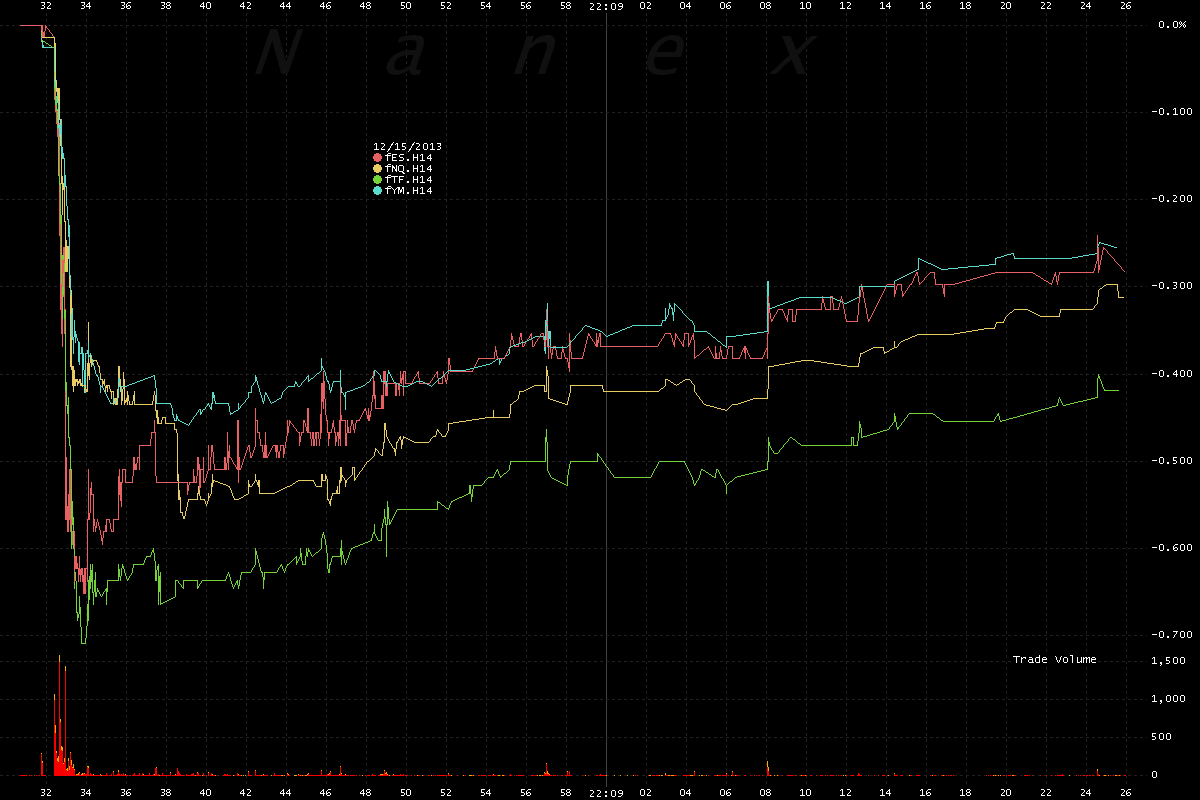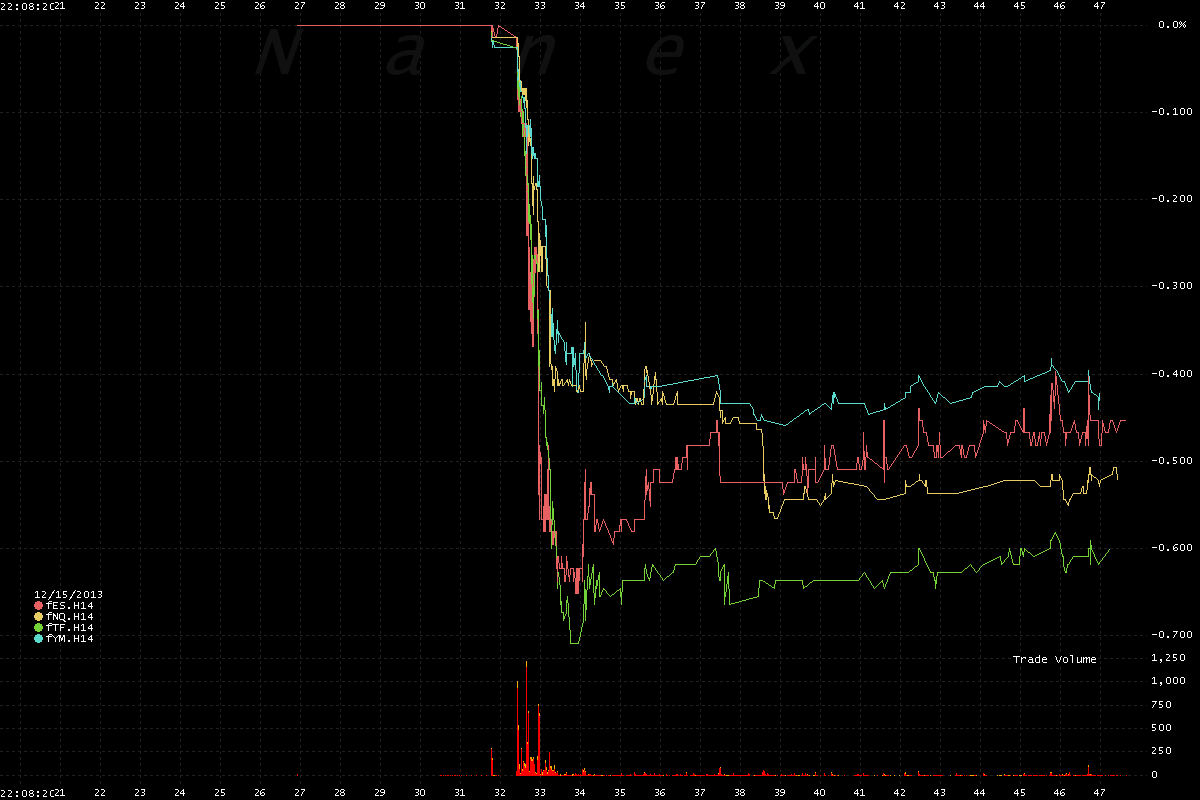Wolf Richter www.testosteronepit.com www.amazon.com/author/wolfrichter
Municipal bond investors, a conservative bunch who want to avoid rollercoaster rides and cliffhangers, are getting frazzled. And they’re bailing out of muni bond funds at record rate, while they still can without losing their shirts. So far this year, they have yanked out $52.8 billion. In the third quarter alone, as yields were soaring on the Fed’s taper cacophony and as bond values were swooning, net outflows from muni funds reached $32 billion, which according to Thomson Reuters, was more than during any whole year.
Muni investors have a lot to be frazzled about. Municipal bonds used to be considered a safe investment – though that may have been propaganda more than anything else. Munis are exempt from federal income taxes, hence their attractiveness to conservative investors in high tax brackets. Munis packaged into bond funds appealed to those looking for a convenient way to spread the risk over numerous municipalities and states. While the Fed was repressing rates, muni bond funds were great deals.
Then came the bankruptcies.
The precursor was Vallejo, CA, a Bay Area city of 115,000 that filed for Chapter 9 bankruptcy protection in 2008 and emerged two years ago. But it’s already struggling again with soaring pension costs that had been left untouched. Jefferson County, which includes Alabama’s largest city, Birmingham, filed in 2011 when it defaulted on $3.1 billion in sewer bonds, the largest municipal bankruptcy at the time [but it’s already issuing new bonds; read….. Municipal Bankruptcy? Why Not! And so The Floodgates Open].
Stockton, CA, filed in June 2012. Mammoth Lakes, CA, filed in July 2012. San Bernardino, CA, filed in August 2012. They were dropping like flies in the “Golden State.” Detroit filed in July this year, crushing all prior records with its debt of up to $20 billion. That’s $28,000 per person for its population of 700,000.
But Detroit is just a fraction of what is skittering toward muni investors: the Commonwealth of Puerto Rico. The poverty rate is 45.6%. Unemployment is 14.7%. The economy has been in recession since 2006. The labor force has shrunk 16% from 1.42 million in 2007 to 1.19 million in October. The number of working people, over the same period, has plunged from 1.8 million to 1.1 million, a breathtaking 39%.
Puerto Rico had a good run for decades as federal tax breaks lured Corporate America to set up shop there. But when these tax breaks were phased out by 2005, the companies went in search for the greener grass elsewhere. To keep splurging, the government embarked on a borrowing binge that left the now lovingly named “Greece of the Caribbean” with nearly $70 billion in debt.
That’s 70% of GDP, and for its population of 3.67 million, about $19,000 per capita, or about $64,000 per working person. And then there is the underfunded pension system. But unlike Detroit, Puerto Rico is struggling to address its problems with unpopular measures, raising all manner of taxes and cutting outlays. Not even the bloated government payrolls have been spared. Too little, too late? Given the enormous poverty rate and long-term shrinking employment, what are the chances that this debt will blow up?
Pretty good, according to Moody’s Investors Service. Last week, it put $52 billion of Puerto Rico’s debt under review for a downgrade – to junk. Moody’s litany of factors: “Failure to access the public debt market with a long-term borrowing, declines in liquidity, financial underperformance in coming months, economic indicators in coming months that point to a further downturn in the economy, inability of government to achieve needed reform of the Teachers’ Retirement System.” This followed a similar move by Fitch Ratings in November.
Alas, Puerto Rico has swaps and debt covenants with collateral and acceleration provisions that kick in when one of the three major credit ratings agencies issues the threatened downgrade. Which “could result in liquidity demands of up to $1 billion,” explained Moody’s analyst Lisa Heller. It would “significantly narrow remaining net liquid assets.”
Now Puerto Rico is under pressure to show that over the next three months or so it can still access the bond markets at a reasonable rate. If not….
Puerto Rico’s debt was a muni bond fund favorite because it’s exempt from state and federal taxes. Now fears of a default on $52 billion or more in debt are cascading through the $3.7 trillion muni market. But Puerto Rico isn’t alone. Numerous municipalities and some states have ventured out on thinner and thinner ice.
Default risks are dark clouds on the distant horizon or remain unimaginable beyond the horizon. And hopes that disaster can be averted by a miracle still rule the day. However, the Fed’s taper cacophony is here and now, and though the Fed is still printing money and buying paper at full speed, the possibility that it might not always do so hangs like a malodorous emanation in the air.
Taper talk and bankruptcies are a toxic mix for munis. Now add the lure of stocks that have become the official risk-free investment vehicle with guaranteed double-digit rates of return for all years to come. So muni-fund investors, tired of losing money, are seeking refuge in stocks. This has pressured munis further. The Bank of America Merrill Lynch master municipal index has dropped 2.8% and, unless a miracle happens, will end the year in the red. A first since 2008. Its index of bonds with maturities of at least 22 years has skidded almost 6% – though the Fed hasn’t even begun to taper.
The Fed’s easy money policies over the decades encouraged borrowing binges by municipalities and states. When the hot air hissed out of history’s greatest credit bubble in 2008, the Fed’s remedy, its ingenious QE and zero-interest-rate policies, blew an even greater credit bubble – kudos! As that credit bubble transitions from full bloom to whatever comes afterwards, the plight of muni bond funds is just the beginning.
The Fed’s policies of dollar destruction took on a sudden virulent form in 1970 – clearly visible against the Swiss Franc. And it’s still going on. When even the Swiss couldn’t handle it anymore, they too jumped into the currency war. Read…. Mother Of All Currency Wars in One Chart: Dollar Vs. Swiss Franc







via Zero Hedge http://feedproxy.google.com/~r/zerohedge/feed/~3/J7HFwwgZu2s/story01.htm testosteronepit


![]()








